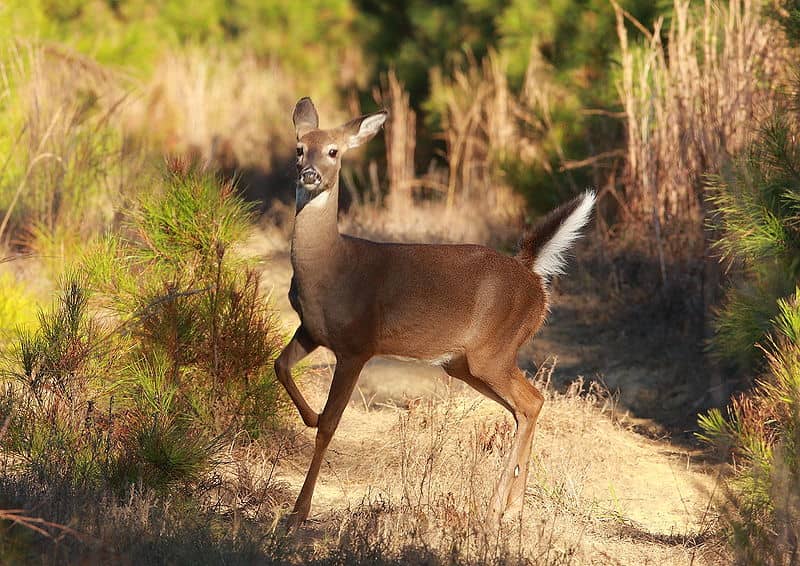Study: Deer May Be Afraid of the Color White
OutdoorHub Reporters 07.20.15

Hunters may have noticed that the color white often provokes an immediate—and highly visible—response from deer, and a new study from two researchers in Wyoming suggests that deer may actually be afraid of the color.
The study was conducted by Corinna Riginos and Morgan Graham over a three-year period and funded by the Wyoming Department of Transportation as part of a program to assess and prevent deer-vehicle collisions. In their research, Riginos and Graham tested the effectiveness of highway reflectors by covering them with black or white canvas bags, and leaving some uncovered. The researchers found that exposed reflectors resulted in 32 percent fewer collisions compared to the ones covered with black bags, but the ones with white bags resulted in a similar 33 percent fewer collisions compared to the uncovered ones.
“When we covered up the reflectors with a white canvas bag, basically because we just wanted to neutralize the reflectors, we found that the white canvas bag worked better than the reflectors,” Rignios told ksl.com.
It was not a result that the researchers expected. Rignios and Graham said they are unsure exactly why the color white appeared to have such a drastic effect on deer collision rates. Their current theory is that white is much more visible to deer than other colors or that it simply terrifies them.
“We don’t know exactly why,” said Riginos. “Obviously, it’s really hard to get inside a deer’s head and know exactly what they’re thinking.”
One possible answer is that whitetail deer flash their tails when alarmed. This movement can be used to alert a herd to the presence of a predator, and can be taken further by flaring rump hairs, at which point the deer is ready to flee. A white canvas bag waving in the wind can be mistaken for a tail at a distance and may lead to the animals being cautious around the road.
The white bags are also much more economical than the current reflectors used by the Wyoming Department of Transportation. According to Riginos and Graham, each reflector costs about $23.50, which translates to roughly $8,000 to $10,000 in installment costs per mile. A simple canvas costs about $1.50 each. While the researchers admit that using canvas bags hardly makes for a permanent solution, they speculate that it could lead to savings for taxpayers, and most importantly, fewer accidents down the road.
“Sticking a white bag on a post was much more cost-effective than putting a Swarovski crystal reflector on there,” Riginos told the Jackson Hole News & Guide.
The researchers added that in areas with white bags, the deer still did not avoid the highway entirely but were more perceptive of moving vehicles. When traffic had passed, the animals would then safely cross the road.

